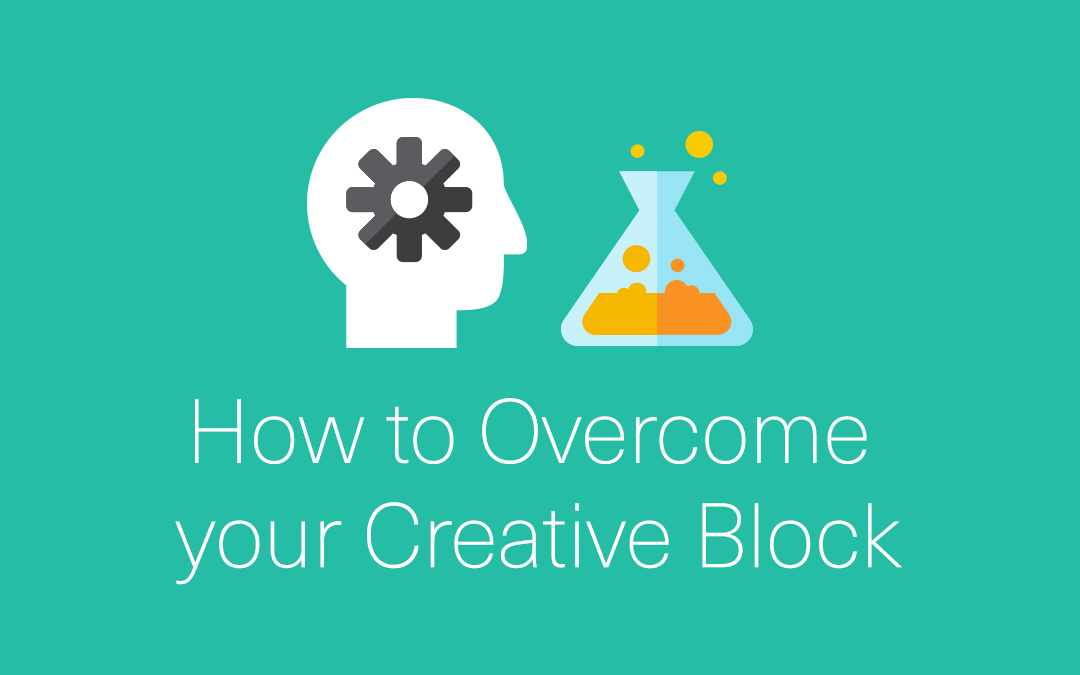How to Overcome your Creative Block
This article has been contributed by Barry Eisenman.
Creative blocks, while unnerving, are normal and unfortunately part of the creative process. It’s not something to be feared – rather, something that affords you the opportunity to rethink your concept and the direction you’re pursuing.
– Edward de Bono, author, inventor, physician, psychologist
When you find yourself stuck with creative block, here are a few things you can try to reboot your thinking so you can move forward.
Also see how to be creative and how to boost your creativity.

1. Catch yourself at your most creative.
The thing about creative block is, you haven’t stopped being creative. Your brain is still whirring away, but you just have to capture those ideas. Often great ideas are quickly forgotten because you didn’t take time to jot them down and revisit them later. As a creative person, it’s always a good idea to keep a journal with you at all times and write down whatever is on your mind. However, in today’s world your smart phone is a most valuable tool because it allows you to record, write or photograph interesting ideas and have them at your disposal. You never know when the next great creative idea will hit you. As such, you should always be prepared.
2. Clear your perspective.

If you say a word repeatedly, it stops sounding like a real word. The same thing happens when you stare at your project for hours, trying to address the problem from the same angle. When you reach a roadblock and can’t figure your way around it, briefly step away. Nothing stifles creativity more than trying to come up with “the idea,” versus exploring other ideas and concepts that may be the springboard to the best solution.
If you feel you’ve hit the wall, the best thing to do is to go for a walk, do something physical, get a healthy snack, do some breathing exercises and then come back to your project feeling reinvigorated and energized.
3. Create your own environment.

Is your workspace a productive environment? (See office Feng Shui) If your office is not conducive to creativity, it may be time to change your surroundings so they stimulate and motivate you to be more effective. Changing the scenery could be something as simple as decorating your office space with new photos, favorite quotes, artwork or anything else that inspires you. Consider adding a whiteboards to your space – they’re a useful tool for jotting down and capturing your ideas.
4. Get up and move around.

A 2013 study in Frontiers in Human Neuroscience shows that regular exercise is associated with better divergent and convergent thinking – two important components of the creative thought process. If you’re not fond of exercising, even a quick 30-minute walk each day will help clear your mind. It’s also good for your overall health and well-being.
Another tip is to set your clock as a reminder to move around every 45 minutes to give your brain a rest and get your blood circulating. This also will help to keep you refreshed and relaxed, and boost your brainpower.
5. Seek comments and input.

Conduct an informal focus group. Ask co-workers, friends and others about what you have created so far. Remember, everybody has his or her own perspective and interpretation. Even though you may not agree with them entirely, it can take only one comment to be the springboard for what might become your “best” solution. Everyone’s opinions are valid, but rarely will they be the sole solution to your problem. At the least, they will help you view your work in a new light.
6. Realize it’s a block, not a wall.

For every creative impasse, there are dozens of solutions. The creativity is there, but you just have to access it. You will undoubtedly throw away countless drafts. Your job – although it may be the most demanding – is to sift through all the possibilities and decide which is the best answer for the creative problem you’re trying to solve.
Lotta Nieminen, a graphic designer and illustrator, says:
“My best pieces were the outcomes of my biggest struggle. Now, when I hit a creative dead end, I overcome it by seeing it as an opportunity to rethink, re-evaluate, and make something great.”
–
Barry Eisenman of Nutis Press contributed content to this article. Nutis’ expertise is rooted in designing innovative point-of-purchase displays and retail merchandising solutions. We help brand manufacturers get their products noticed and engage consumers.
